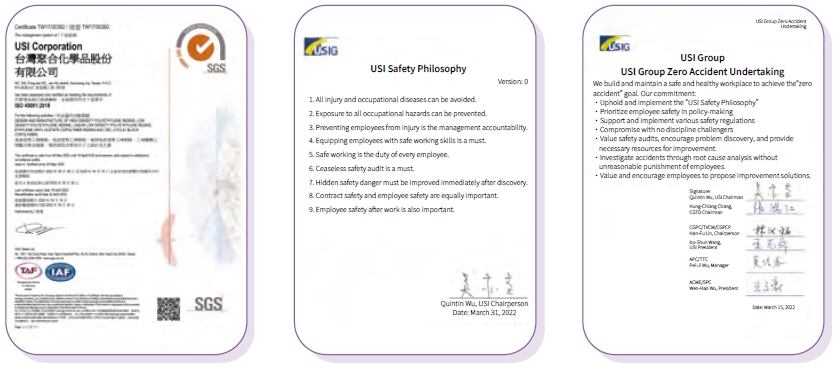Apart from implementing the OH&S management with respect to the Plan-Do-Check-Act (PDCA) cycle, the HSE and energy committee holds an extraordinary meeting at the beginning of each year to discuss the pilot review, baseline review, performance evaluation and assessment; review system performance in the previous year, and draw up the annual targets and expected achievements. Every quarter, the HSE management review meeting will be held to follow up and review the internal and external audit results, legal compliance, OH&S performance, system document revision, and various recommendations. Through the discussion and participation of all units, we aim to make continual improvement and enhance safety. Furthermore, the industrial safety department of the plant and construction responsible units perform industrial safety patrols and checks every day and engage in mutual supervision and experience sharing with USI affiliates to further enforce OH&S.
